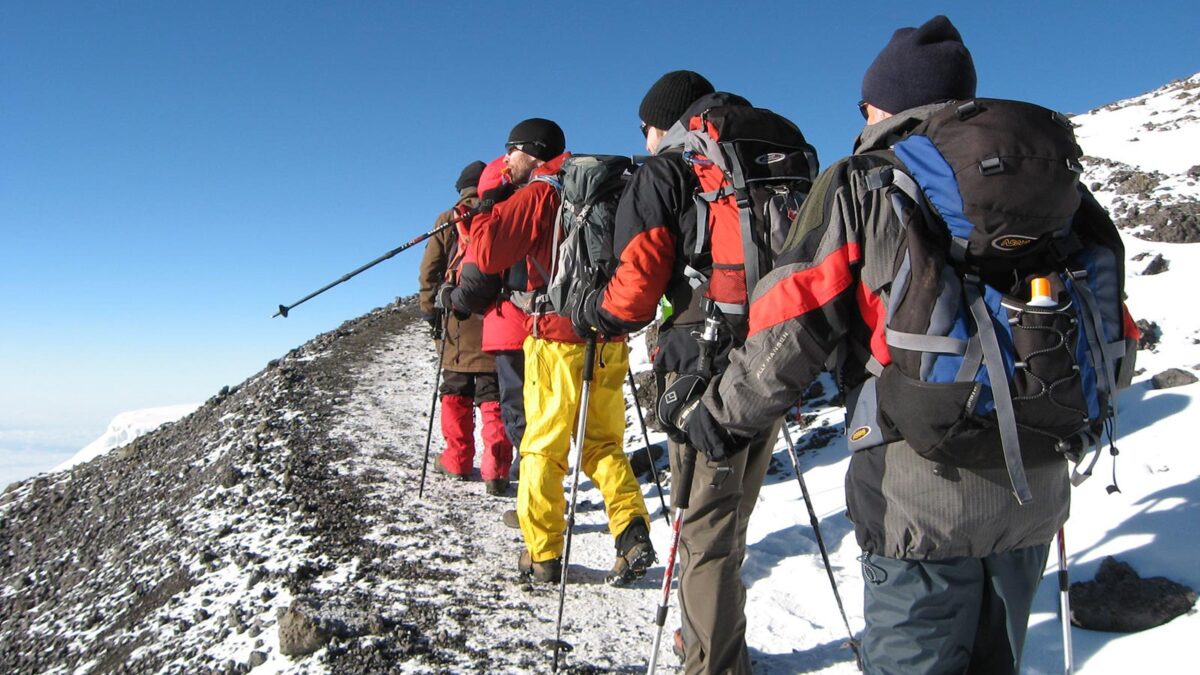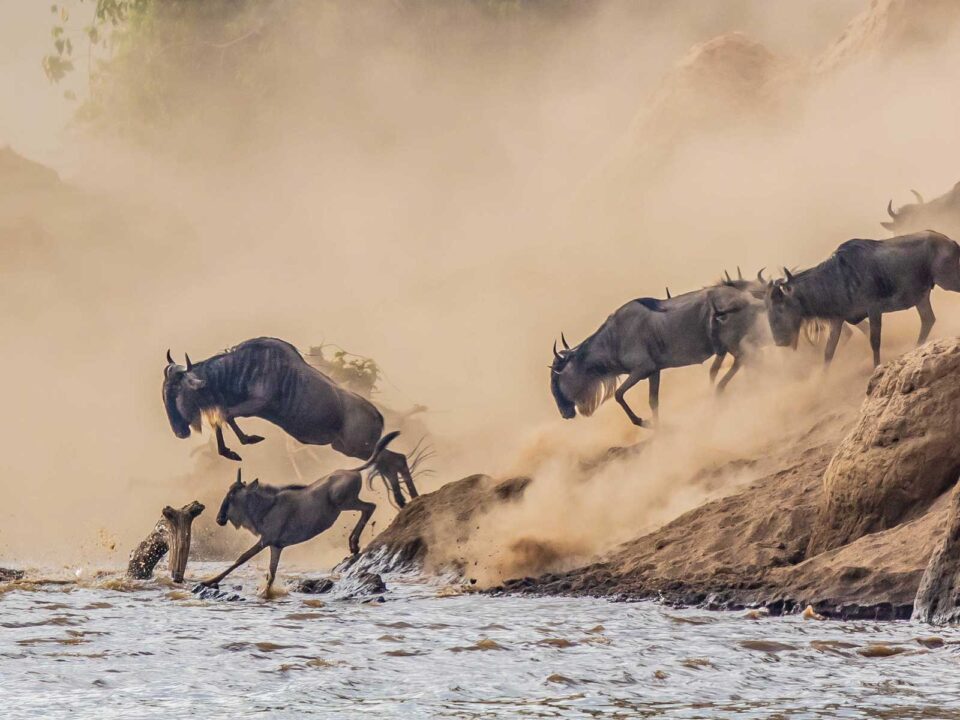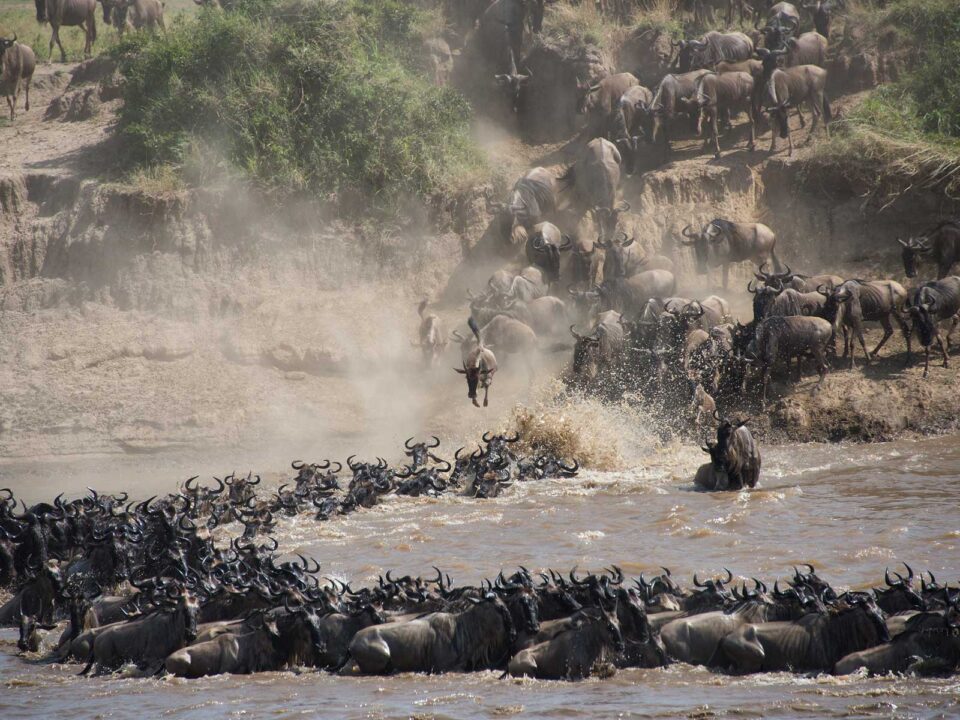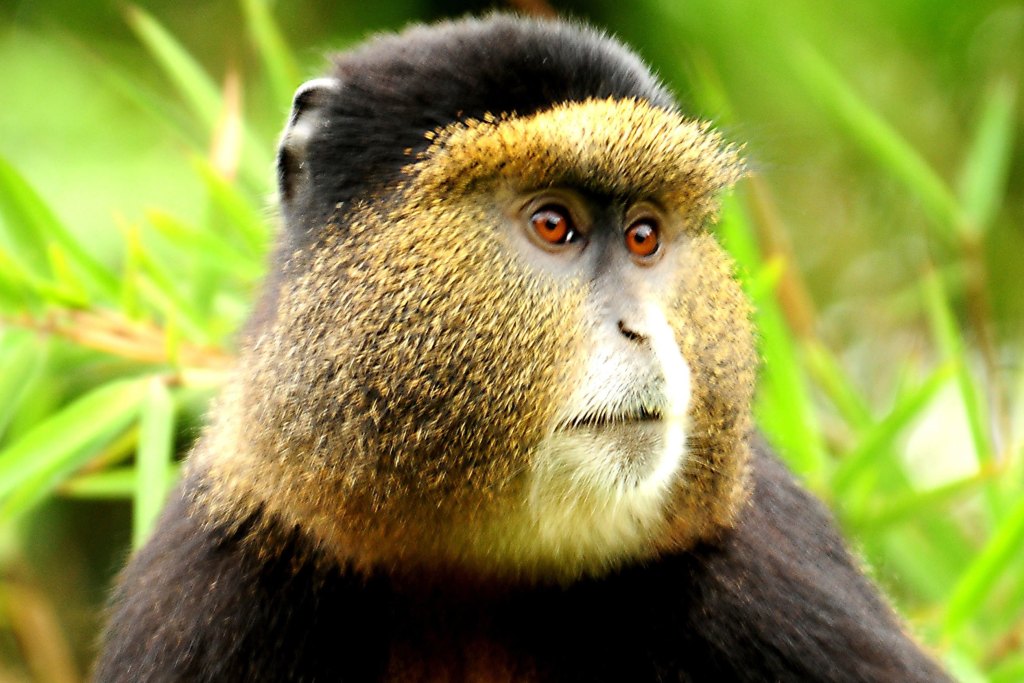
Golden Monkey Trekking in Rwanda
April 3, 2025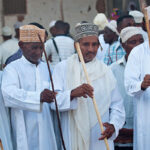
The Maulidi Festival
April 3, 2025Serengeti Wildebeest Migration and Mount Kilimanjaro Trek
Tanzania, with its unrivaled natural beauty and adventure offerings, stands as a dream destination for travelers seeking both wildlife encounters and the challenge of scaling Africa’s highest peak. The Serengeti Wildebeest Migration and Mount Kilimanjaro trek are two of the most iconic experiences on Earth—combining them into one unforgettable safari allows you to witness the raw beauty of nature and conquer personal feats of strength and endurance.
With a carefully planned 10-day safari, you can experience the great migration in the Serengeti and ascend to the towering heights of Mount Kilimanjaro, creating a perfect balance between awe-inspiring wildlife experiences and a physically rewarding challenge. These two adventures encapsulate the essence of what Tanzania has to offer: an unfiltered connection with nature and the opportunity to push your limits in some of the most scenic landscapes in the world.
1. Serengeti Wildebeest Migration: A Natural Wonder
The Serengeti Wildebeest Migration is more than just a wildlife event—it’s an entire ecosystem in motion. Every year, more than 1.5 million wildebeests, along with zebras, gazelles, and other herbivores, follow an ancient path across Tanzania’s Serengeti National Park and into Kenya’s Maasai Mara. Their journey is driven by the primal need to find food and water, but it is fraught with dangers, from the unrelenting heat to the predators that follow in their wake.
Why the Migration is So Spectacular:
-
Survival of the Fittest: The migration is a raw, thrilling spectacle, highlighting the harsh realities of nature. It’s not just a journey for the animals—it’s a fight for survival. As the herds move across the plains, they are hunted by predators like lions, cheetahs, and hyenas. The young calves, especially during the calving season, are vulnerable and often become prey to these relentless hunters.
-
The Circle of Life: The migration is not only a journey of survival but a critical part of the Serengeti’s ecological balance. As herbivores move across vast landscapes, they help maintain the health of the ecosystem by grazing on grass and preventing overgrowth. In turn, the presence of carnivores ensures that the populations of herbivores remain in check, creating a balanced and thriving environment for all species involved.
Key Stages of the Migration:
-
Calving Season (January to March): This marks the start of the migration in the southern Serengeti, where tens of thousands of wildebeests give birth to their young in a concentrated period. This is one of the most emotional and vulnerable moments for the herd, as predators take advantage of the newborn calves. The combination of births, predators, and the herd’s collective survival instincts is a natural drama that unfolds in real-time.
-
The Northern Push (April to July): As the dry season sets in, the herds begin their migration northward, seeking out new water sources and better grazing grounds. This journey is not without its challenges, including the Grumeti River, where the herds face another battle against predators like crocodiles lying in ambush.
-
The River Crossings (July to October): The Grumeti River crossing (June to July) and the Mara River crossing (July to October) are arguably the most dramatic parts of the migration. The herds must navigate these crocodile-infested waters, and while some make it across unscathed, many become prey to the lurking dangers. The survival instincts of the animals, combined with the unpredictable nature of the crossing, make this one of the most exciting parts of the migration to witness.
-
Return South (November to December): After the short rains, the herds begin their return journey to the southern Serengeti, completing the full circle of the migration. This marks the end of the cycle and the beginning of the next calving season.
When to Experience the Best Moments:
-
For River Crossings: Plan your trip between July and August, when the herds are in the northern Serengeti and must navigate the dangerous river crossings. This is the most dramatic period of the migration, where you’ll see the heart-pounding moments as the herds battle nature’s challenges.
-
For Calving Season: If you want to witness the birth of thousands of wildebeest calves, visit the southern Serengeti from January to March. This is when the migration begins, and it’s a time of both new life and intense predator-prey interactions.
2. Climbing Mount Kilimanjaro: The Ultimate Physical Challenge
Mount Kilimanjaro, standing at a towering 5,895 meters (19,341 feet), is Africa’s highest peak and one of the most iconic mountains in the world. Conquering Kilimanjaro is a goal for many adventurers, and it’s an experience that takes you through a variety of ecosystems, from tropical rainforests at the base to the cold, barren summit. For those seeking a physical challenge and a view like no other, reaching Uhuru Peak is a once-in-a-lifetime achievement.
What Makes Kilimanjaro So Special:
-
Diverse Ecosystems: As you ascend, you pass through different ecological zones, each with its unique flora and fauna. From lush rainforests at the base, to moorland and alpine deserts, you’ll witness dramatic shifts in landscapes and habitats. The journey from the base to the summit feels like a travelogue of the world’s climates.
-
Challenging Yet Accessible: While reaching the summit is undoubtedly challenging due to the altitude, the climb is achievable for most people who are in good physical condition. There are several routes to choose from, ranging in difficulty, and each offers a unique experience. From the popular Machame Route to the more secluded Lemosho Route, there’s an option that suits your preferences and fitness levels.
-
Uhuru Peak: Reaching Uhuru Peak is a reward that no words can fully describe. As the highest point in Africa, standing at 5,895 meters above sea level, it offers panoramic views that stretch out across Tanzania. The sense of achievement, coupled with the breathtaking views, is something that will stay with you forever.
Best Time to Climb Kilimanjaro
The best time to climb Mount Kilimanjaro is during the dry season, which runs from June to October and from January to February. These months provide the most favorable weather conditions for the climb, with clear skies and less chance of rain. The rainy season from March to May can make the trails slippery and challenging, so it’s best to avoid trekking during that period if you’re looking for the best conditions.
Combining the Serengeti Wildebeest Migration and Kilimanjaro Trek: An Adventure Like No Other
Combining the Serengeti Wildebeest Migration with a Mount Kilimanjaro trek gives you the ultimate Tanzania safari. Both experiences complement each other perfectly. The migration offers an immersive and intense experience of nature’s raw power, while Kilimanjaro provides an empowering physical challenge. Together, they allow you to experience the wildest parts of Africa—both its wildlife and its highest peaks—ensuring a safari like no other.
Planning Your Tanzania Adventure: Tips for the Best Experience
-
Timing Is Key: For the Serengeti Migration, the best time to go is July to August for the dramatic river crossings, or January to March for the calving season. For Kilimanjaro, the dry season from June to October and January to February are ideal for trekking.
-
Physical Preparation: Both experiences are physically demanding. The Serengeti involves long days under the African sun, while climbing Kilimanjaro requires stamina and altitude acclimatization. Proper fitness training and preparation are key to having a successful trip.
-
Duration: A 10-day safari gives you enough time to experience the highlights of both adventures. This gives you a well-rounded experience, from witnessing the migration’s raw drama to conquering Africa’s highest peak.
Why Choose Trek Africa Expeditions?
At Trek Africa Expeditions, we organize unforgettable safari experiences that combine adventure, wildlife, and culture. Our team of experts provides seamless, personalized service to help you plan and execute the perfect Serengeti Wildebeest Migration and Kilimanjaro trek.
Why Book With Us?
-
Expert Knowledge & Guidance: Our team knows Tanzania inside and out and will help you plan every aspect of your adventure, ensuring you get the most out of your time in the country.
-
Tailored Safari Experiences: Whether you prefer private treks or small group tours, we offer options to fit every budget and preference.
-
A Trusted Reputation: With a history of delivering exceptional service and high-quality safaris, we have earned the trust of adventurers worldwide.

